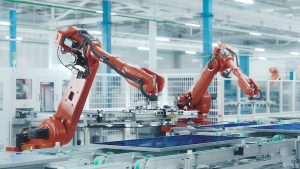Machine builders have always been very innovative in developing their machines to deliver best values to their end users. In order to compete, most machine builders strive to provide end users the most in machine productivity, flexibility, efficiency, and availability. The more innovative the machine builder, the better his position in the market. The advent of smart machines is enabling machine builders to innovate in ways that were never before possible.
The concept “smart machine” implies a machine that is better connected, more flexible, more efficient and safe. Based on connected products, edge control and advanced software tools and applications, smart machines boost efficiency by providing succinct and timely data to operators so that production output and quality can be maximized.
To deliver on the promises of the smart machine concept, machine builders have to consider the three critical phases of a machine’s life cycle: design and engineering, commissioning and operation, and maintenance and service.
Here’s how smart machines can impact each of these three phases:
- Design and engineering – In this phase, multi-disciplinary software tools for design and engineering enable engineers to perform the various tasks for the mechanical, electrical and automation design. Clear and well-defined interfaces ensure consistency and simplify data and model management. The modularity of smart machines enables hardware and software reuse. Smart machine templates of proven and validated functional modules enable machine builders to simplify design and engineering tasks. This helps to shorten time to market. Software simulation tools allow precise quality control and early and easy validation, which speeds up the implementation especially during the programming phase. Inaccurate implementation can waste many hours of precious (and costly) commissioning time. Software simulation tools allow both machine builders and operators to familiarize themselves with a new system before it is installed. This enhances both efficiency and safety.
- Commissioning and operation – In this phase of new machine roll-out, the business driver is the rapid start-up and availability of the machine. When the various devices that enable the machine to work are linked together, they must work in a synchronized fashion very quickly.
In the smart machine world, communication protocols are standardized. Smart machines (made up of connected products, edge control and software applications) all identify and communicate to each other automatically through machine to machine communication. This enables the smart machines not only to talk to each other on the floor of the factory, but also to communicate to humans at the operation and management levels of the plant via dashboards. The machine also has knowledge about itself. It can answer questions like: Where is the machine located? What is the status of the machine? What is the status of its parts? Is a motor about to fail? This machine self-awareness enables operational analytics in the cloud so that the right decisions can be made, to reduce downtime and achieve higher OEE.
- Maintenance and service – End users want machine builders to deliver machines that reduce TCO (total cost of ownership). In the smart machine world, this means delivering efficiency and flexibility through a connected machine that enables remote access, predictive maintenance, remote monitoring in a cybersecure environment. Such a scenario will considerably reduce the efforts to diagnose and fix machine operational issues. It enables proactive maintenance in minutes instead of facing hours of unplanned downtime.
The adoption of smart machines is rapidly accelerating. Smart machine technologies in the automation realm will enhance the machine builders’ ability to innovate. Tools such as simulation software, templates, remote monitoring and cloud based analytics will help the machine builder to better support end user applications such as packaging, and material handling, material working or pumping etc.
To learn more about how Schneider Electric supports machine builders and industrial end users, download the white paper, “Understanding Smart Machines: How They Will Shape the Future.”


